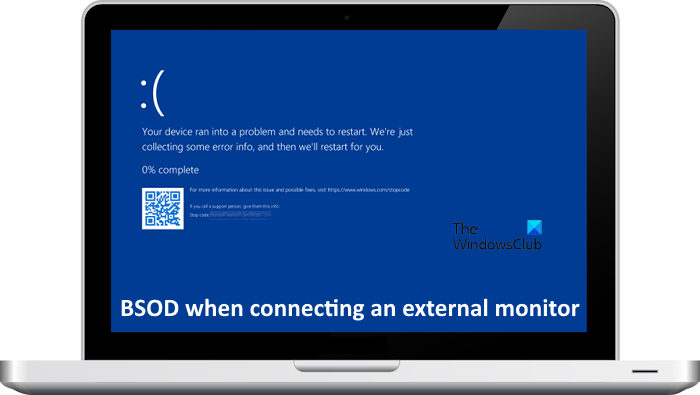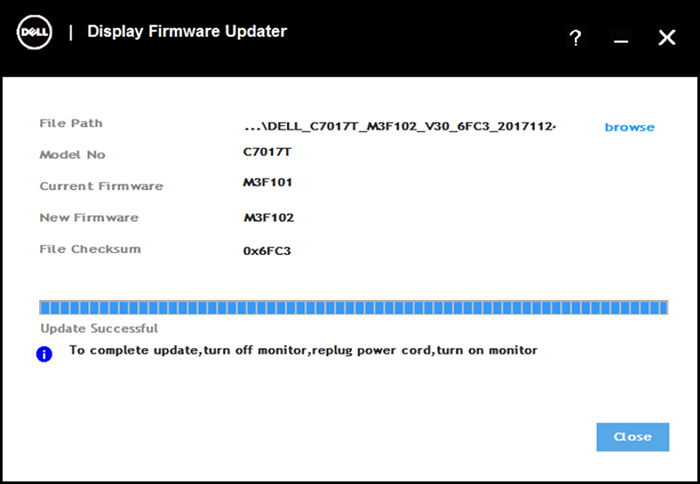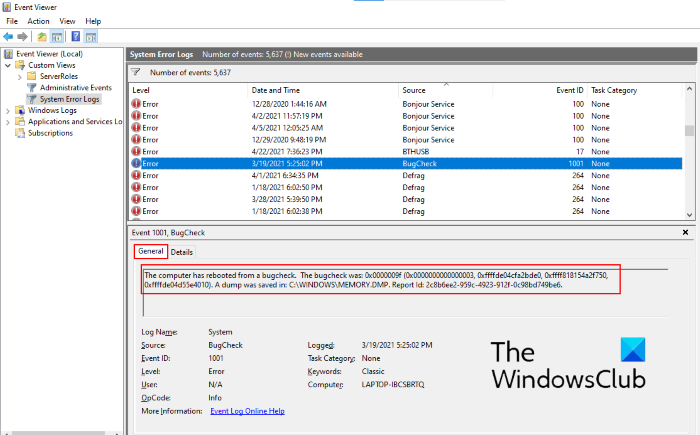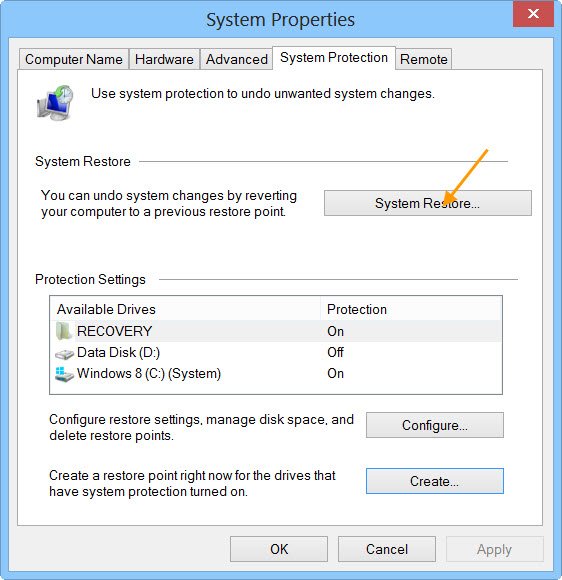Some users experienced a Blue Screen error when connecting an external monitor to their Windows computer. This issue can have many causes, such as a corrupted graphics card driver or a faulty motherboard. If you encounter a BSOD error when connecting an external monitor to your Windows system, the solutions provided in this article will help.

Fix Blue Screen error when connecting an external monitor
If a BSOD error occurs when connecting an external monitor, follow the suggestions provided below:
- Switch to integrated GPU (if applicable)
- Update device drivers
- Roll Back or reinstall the Display adapter
- Read the BSOD error message and troubleshoot accordingly
- Perform a System Restore.
Below, I have explained all these fixes in detail.
1] Switch to an integrated graphics card (if applicable)
If your computer has dual graphics cards, one is integrated and another is dedicated, the problem may be associated with the dedicated graphics card or its driver. Switch to the integrated graphics card and then connect the external monitor to check this. See what happens this time. If your computer does not crash, either your dedicated graphics card driver is corrupted or there is a hardware fault with your dedicated graphics card.
2] Update device drivers

Update your device drivers – especially the Intel drivers and Monitor firmware and see. Manufacturers have also released special driver download software for their brands:
- Dell Update utility will help you download or update Dell Drivers
- Lenovo System Update helps you download Lenovo Drivers, Software, Firmware, Update BIOS.
- AMD users may use AMD Driver Autodetect.
- Intel users may use Intel Driver & Support Assistant.
- HP users can use the bundled HP Support Assistant.
3] Roll Back or reinstall the Display adapter
You can also try to roll back or reinstall your Display adapter. To do so, follow the steps provided below:

- Open the Device Manager.
- Expand the Display adapters branch.
- Right-click on your graphics card driver and select Properties.
- Go to the Driver tab and click on the Roll Back Driver button (if the button is clickable).
Check if the problem is fixed after rolling back the Display adapter. If this does not work or the Roll Back Driver button is greyed out, install your Display adapter clean. For this, you can use the Display Driver Uninstaller (DDU) Utility to remove the Display adapter completely. After removing the driver, install the graphics card driver from scratch.
4] Read the BSOD error message and troubleshoot accordingly
When a BSOD error occurs, Windows displays the error message and an error code (if applicable). Read that error message and note it down. Now, when your computer restarts, troubleshoot the BSOD error accordingly. You can get help from the best online tech support websites.

The BSOD screen appears for a few seconds, and the computer restarts automatically. It becomes difficult to note the BSOD error message or error code in such a condition. Therefore, if you cannot read the error message, you can view it in Windows Event Viewer.
According to some users’ reports, the BSOD error was caused by the nvlddmkm.sys file, which is associated with the NVIDIA graphics card driver. Updating or performing a clean installation of the NVIDIA graphics card driver can fix the error.
Some users reported the following BSOD error on connecting the external display:
The BSOD mentioned above indicates a hardware error with the Windows PC. However, some software issues can also cause this error. If you have overclocked your graphics card, disable Overclocking and see if it helps. You can also run the System File Checker to repair the corrupted system image files. If possible, roll back or reinstall your graphics card driver.
5] Perform a System Restore

System Restore can also help you fix this issue. It will restore your system to the previous working state, provided the previous restore points exist on your system. While performing a System Restore, select a restore point before which the problem did not exist.
I hope this helps.
What could cause a blue screen BSOD?
Various causes of a Blue Screen error on a Windows computer can exist. Both hardware and software issues can cause a BSOD error. Examples of software issues that can cause a BSOD error include a faulty driver. Examples of hardware issues that can cause a BSOD error include faulty RAM, a faulty motherboard, a faulty graphics card driver, etc.
How to fix PC No display?
The No display problem on a Windows computer can occur in different scenarios, like the CPU fan not spinning, the DRAM light on the motherboard being orange, the PC turning On but no display or beeps, etc. In each case, the fixes are different. For example, if the DRAM light is on, you can try clearing the CMOS, performing a hard reset, flashing your BIOS, etc.
Read next: Blue Screen after installing Graphics driver on Windows.
Leave a Reply